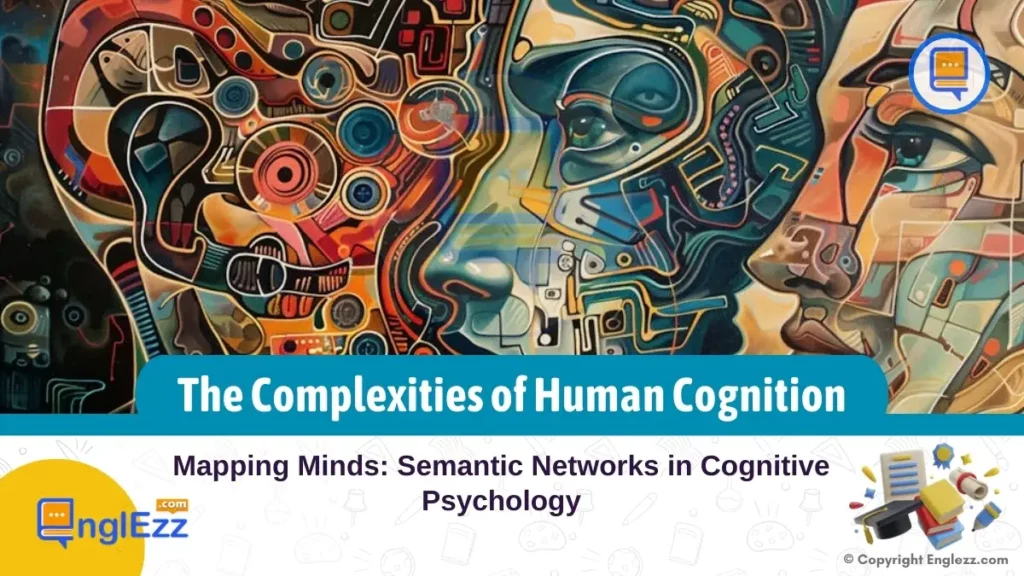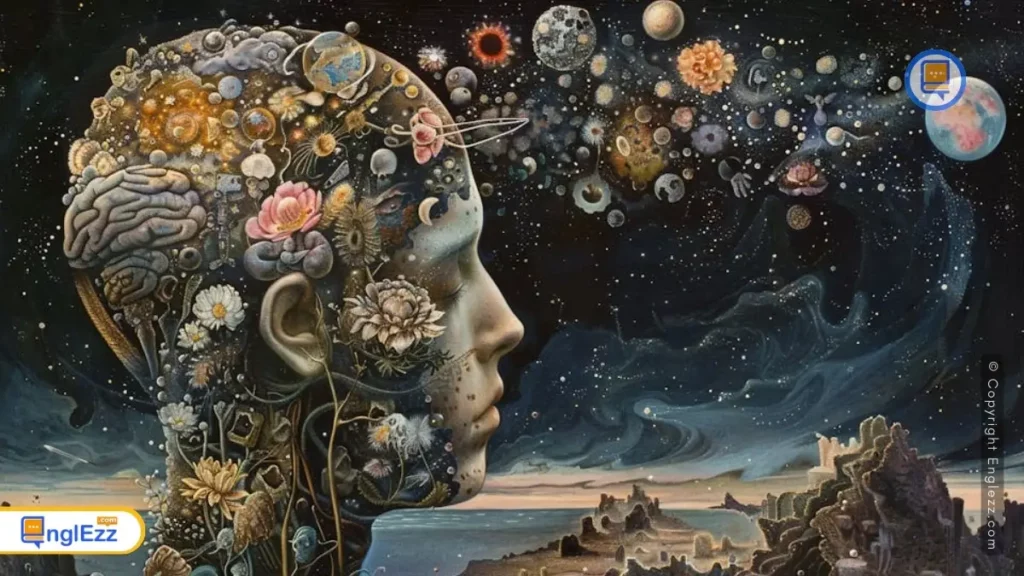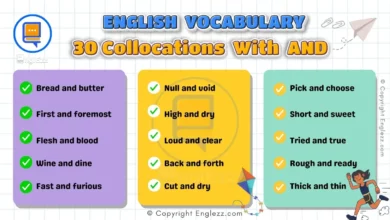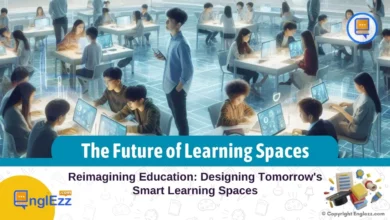The human mind is a labyrinth of intricacies, a maze of thoughts, emotions, and perceptions that continue to fascinate and confound us. Despite centuries of scientific inquiry, the workings of human cognition remain a complex and multifaceted tapestry, woven from threads of biology, psychology, philosophy, and culture. The Atlas of Thought is a journey into the very fabric of our minds, a comprehensive exploration of the intricacies of human cognition that seeks to unravel the mysteries of perception, attention, memory, language, and emotion.
Table of Contents
- Unraveling The Complexities of Human Cognition
- Introduction to the Atlas of Thought
- The History of Cognitive Mapping
- The Science of Cognitive Mapping
- Understanding the Cognitive Map
- The Different Levels of Cognitive Mapping
- The Role of Emotions in Cognitive Mapping
- The Impact of Technology on Cognitive Mapping
- The Cognitive Map in Different Cultures
- The Cognitive Map in Childhood Development
- The Cognitive Map in Brain Function and Structure
- The Limits of Cognitive Mapping
- The Future of Cognitive Mapping
- Final Thoughts
Unraveling The Complexities of Human Cognition
From the neural networks that govern our thoughts to the cognitive biases that shape our behaviors, this atlas provides a detailed map of the human thought landscape, illuminating the hidden patterns and connections that underlie our mental lives. By navigating the twists and turns of this cognitive atlas, we may uncover new insights into the workings of our minds, and perhaps even gain a deeper understanding of ourselves and the world around us.
The complexities of human cognition await in The Atlas of Thought. Join us on a journey to decode how we think and perceive our reality!
Introduction to the Atlas of Thought
Welcome to the Atlas of Thought, a vast and intricate map that navigates the complexities of human cognition. This journey is an invitation to explore the labyrinthine corridors of the mind, where thoughts, emotions, and behaviors intersect and influence one another. The Atlas of Thought is a comprehensive guide to the workings of the human brain, a fascinating and often mysterious entity that remains one of the greatest unsolved mysteries of our time.

As we embark on this intellectual adventure, we will delve into the fundamental aspects of thought, from the neural networks that underlie our perceptions and memories to the cognitive biases that shape our decisions and actions. We will examine the intricate dance between conscious and unconscious processes, and the ways in which our experiences, emotions, and environment shape our understanding of the world.
Throughout this journey, we will also encounter the many contradictions and paradoxes that surround human cognition, from the simultaneous coexistence of rationality and irrationality to the tension between our desire for knowledge and our tendency towards confirmation bias. We will explore the ways in which our thought patterns are influenced by culture, society, and history, and how they, in turn, shape our individual and collective experiences.
The Atlas of Thought is a tool for understanding the human mind, a map that charts the uncharted territories of our thoughts, emotions, and behaviors. It is a guide for anyone interested in exploring the complexities of human cognition, and for those who seek to better understand themselves and the world around them. Join us on this journey of discovery, as we unravel the intricate complexities of human thought and uncover the hidden patterns that shape our lives.
The History of Cognitive Mapping
The concept of cognitive mapping, a fundamental aspect of human cognition, has a rich and fascinating history that spans centuries. The earliest recorded attempts to visualize and understand the human mind date back to ancient civilizations, where philosophers and scholars attempted to create mental maps of their own thought processes. The Greek philosopher Aristotle, in his work “De Anima,” described the mind as a “map” that guides human thought and behavior.
Fast forward to the 19th century, when the German philosopher Friedrich Nietzsche proposed the concept of the “inner world” – a mental landscape that is constantly evolving and shaping our thoughts, emotions, and actions. This idea sparked a wave of interest in the study of cognitive mapping, with philosophers and psychologists like William James and Sigmund Freud exploring the relationship between the mind and the external world.
In the 20th century, the field of cognitive mapping underwent a significant transformation with the development of cognitive psychology. Researchers like Edward Tolman and George Miller pioneered the study of mental representation, demonstrating that our thoughts and behaviors are influenced by the way we mentally represent the world around us. The advent of computer graphics and cognitive science further accelerated the development of cognitive mapping, enabling researchers to create visual models of mental processes and explore the neural basis of human thought.
Throughout its history, cognitive mapping has been shaped by the intersection of philosophy, psychology, and computer science. As we delve into the complexities of human cognition, it is essential to understand the evolution of cognitive mapping and its significance in our understanding of the human mind. In this section, we will explore the key milestones and figures that have contributed to our current understanding of cognitive mapping, setting the stage for a deeper exploration of the Atlas of Thought.
The Science of Cognitive Mapping
As we navigate the labyrinthine corridors of our own minds, it is easy to become disoriented by the sheer complexity of our thoughts. The Atlas of Thought is an endeavor to chart the uncharted territories of human cognition, and nowhere is this challenge more pressing than in the realm of cognitive mapping. This intricate science explores the ways in which our brains construct mental representations of the world, weaving together threads of perception, memory, and emotion to create a rich tapestry of understanding.
Like the ancient cartographers who charted the seas, cognitive mapping requires us to peer into the depths of our own minds, tracing the contours of our thoughts and emotions as they ebb and flow like the tides. This process is not without its challenges, for our minds are prone to misdirection and distortion, as if the very fabric of our perceptions were subject to the whims of the wind.

And yet, it is through this process of cognitive mapping that we may gain a deeper understanding of ourselves, our thoughts, and our place in the world. By mapping the contours of our own minds, we may uncover hidden patterns, unspoken fears, and long-suppressed desires, all of which hold the key to unlocking the secrets of our own unique cognitive landscape. As we navigate the ever-shifting landscape of our own minds, we may discover that the Atlas of Thought is not just a map, but a key to unlocking the very essence of our humanity.
Understanding the Cognitive Map
Within the labyrinthine corridors of our minds, a mental map is constantly being drawn, a cognitive atlas that guides us through the twists and turns of our thoughts, emotions, and experiences. This cognitive map, also known as the “mental model,” is a complex network of associations, connections, and relationships that shape our perception of the world and ourselves. It is the underlying framework that enables us to navigate the complexities of human cognition, influencing our decision-making, problem-solving, and even our memories.
Imagine a vast, ever-changing landscape, where streets, landmarks, and hidden pathways represent our thoughts, emotions, and experiences. As we move through this mental terrain, our cognitive map is constantly being updated, refined, and expanded, as new information is incorporated and old associations are reevaluated. This cognitive map is not a fixed entity, but rather a dynamic, adaptive system that is shaped by our experiences, emotions, and social interactions.
Understanding the cognitive map is crucial for unraveling the complexities of human cognition, as it reveals the intricate web of relationships that drive our thoughts, behaviors, and emotions. By exploring the cognitive map, we can gain insights into the workings of our own minds, as well as those of others, and develop a deeper understanding of the human experience.
The Different Levels of Cognitive Mapping
The human brain is a vast and intricate landscape, with thoughts and emotions ebbing and flowing like the tides of the ocean. Cognitive mapping, the process of charting our mental terrain, is a complex and multifaceted endeavor that has fascinated philosophers, psychologists, and scientists for centuries. As we delve deeper into the Atlas of Thought, we find that cognitive mapping is not a single, monolithic concept, but rather a tapestry of interconnected threads that weave together to form a rich and nuanced understanding of human cognition.
In this section, we will explore the different levels of cognitive mapping, each one revealing a unique aspect of the human mind. From the concrete, sensory-driven maps that guide our everyday actions, to the abstract, conceptual frameworks that shape our perceptions of the world, we will examine the various ways in which our brains construct and navigate mental landscapes.
At the most basic level, cognitive mapping is a process of spatial reasoning, where our brains use internal representations of the environment to navigate and orient ourselves. This is the realm of mental maps, where we mentally chart our surroundings, recalling the layout of familiar spaces and the locations of significant landmarks. But as we ascend to higher levels, we find that cognitive mapping becomes increasingly abstract, involving the construction of complex networks of associations, inferences, and abstractions.
Here, we will examine the various levels of cognitive mapping, from the concrete and sensory-driven to the abstract and conceptual. We will explore how these different levels of mapping are linked, and how they interact to shape our understanding of the world and our place within it. By examining the different levels of cognitive mapping, we will gain a deeper understanding of the complex and dynamic nature of human cognition, and the ways in which our brains construct and navigate the mental landscapes that shape our thoughts and behaviors.
The Role of Emotions in Cognitive Mapping
As we navigate the intricate landscape of our minds, emotions play a crucial role in cognitive mapping, weaving together the threads of our thoughts, experiences, and memories. The Atlas of Thought reveals that emotions serve as a vital compass, guiding our perception of the world and influencing the way we process information. This intricate dance between emotions and cognition is a fundamental aspect of human psychology, shaping our decisions, attitudes, and behaviors.
Emotions are not just fleeting feelings, but rather a dynamic force that shapes our mental representations of reality. They can amplify or dampen our attention, biasing our perception of the world and influencing our interpretation of events. This emotional resonance is particularly evident in our response to storytelling, where the emotional intensity of a narrative can evoke a profound sense of empathy and understanding.
The Atlas of Thought uncovers the intricate neural networks that underlie this emotional-cognitive relationship, revealing how the brain’s emotional centers, such as the amygdala, interact with the prefrontal cortex, the seat of executive function. This remarkable interplay enables us to create rich, nuanced mental maps, infusing our thoughts and experiences with emotional depth and complexity.
As we delve deeper into the Atlas of Thought, we begin to appreciate the profound implications of this emotional-cognitive partnership. It is an essential component of human cognition, allowing us to navigate the complexities of social relationships, make informed decisions, and create meaningful connections with others. The Atlas of Thought illuminates the intricate topography of human thought, revealing the vital role that emotions play in shaping our understanding of the world and ourselves.
The Impact of Technology on Cognitive Mapping
As we navigate the labyrinthine corridors of our minds, the influence of technology on our cognitive mapping has become a behemoth of a topic, worthy of exploration. The advent of digital tools has revolutionized the way we process information, store memories, and construct mental maps. The GPS on our smartphones, for instance, has redefined our relationship with spatial awareness, allowing us to effortlessly chart our courses through the physical world.
- But what about the cognitive implications of this reliance on technology?
- Have we become so accustomed to the crutch of GPS that our brains have atrophied the ability to create mental maps without it?
The consequences of this dependence on technology are far-reaching, and understanding the impact it has on our cognitive mapping is crucial for grasping the intricacies of human thought.
With the proliferation of digital maps, our brains have become accustomed to the instant gratification of knowing our exact location, obviating the need to engage our cognitive faculties in the process. This has led to a phenomenon known as “cognitive outsourcing,” where our brains offload the task of navigation to the device, rather than relying on internal mental maps.
While this convenience may have its benefits, it also raises concerns about the potential erosion of our spatial reasoning skills. Furthermore, the constant stream of information from our devices has led to a phenomenon known as “information overload,” where our brains struggle to process and retain an overwhelming amount of data. This, in turn, has significant implications for our ability to learn, remember, and understand complex information.
As we continue to navigate the digital landscape, it is essential that we recognize the impact of technology on our cognitive mapping and take steps to maintain a healthy balance between our reliance on digital tools and our own cognitive abilities. By acknowledging the ways in which technology is shaping our minds, we can work towards a more harmonious coexistence between our digital and cognitive selves.
The Cognitive Map in Different Cultures
As we navigate the labyrinthine corridors of our own minds, it is intriguing to consider how our fellow humans, from diverse cultural backgrounds, construct their own cognitive maps. The notion that our thought processes are shaped by our unique cultural experiences is a concept that has fascinated scholars and philosophers for centuries. Do the cognitive maps of individuals from different cultures bear striking similarities, or are they distinct and nuanced, reflecting the cultural heritage and social norms of their respective communities?
Imagine strolling through the bustling streets of Tokyo, where the concept of personal space is redefined by the crowded alleys and neon-lit billboards. Here, the cognitive map of a Tokyo native might be shaped by the emphasis on collectivism, with the individual’s sense of self being inextricably linked to their community and family. In contrast, a cognitive map of a New Yorker might be characterized by the fast-paced, individualistic nature of their city, where personal freedom and autonomy are highly valued.
In this section, we will delve into the fascinating world of cross-cultural cognitive differences, exploring how our thoughts, emotions, and behaviors are influenced by the cultural contexts in which we live. We will examine the ways in which cultural norms and values shape our perception of the world, our relationships with others, and our own sense of self. By exploring the cognitive maps of different cultures, we will gain a deeper understanding of the intricate and multifaceted nature of human thought, and uncover the hidden patterns that unite us all.
The Cognitive Map in Childhood Development
As children grow and develop, their brains are constantly forming and refining connections between neurons, creating a vast, intricate network that will shape their cognitive abilities and influence their thoughts, behaviors, and interactions with the world. This intricate process is often referred to as the cognitive map, a mental representation of the environment and the relationships between people, objects, and events.
In childhood, the cognitive map is still taking shape, and it is a critical period of development where children are learning to navigate their surroundings, making sense of their experiences, and constructing a sense of self. The cognitive map is thought to be influenced by a combination of factors, including genetics, environment, and social interactions, and it plays a crucial role in shaping children’s understanding of the world, their abilities, and their sense of identity.
As children begin to explore and interact with their environment, they start to build their cognitive map, gradually forming a mental representation of their home, school, and community. This process is often facilitated by language, as children use words and phrases to label and describe their experiences, helping to solidify their understanding of the world and their place within it.
The Cognitive Map in Brain Function and Structure
The Cognitive Map: a labyrinth of neural pathways, a tapestry of interconnected nodes, and a symphony of cognitive processes that orchestrate the intricate dance of human thought. This intricate mental framework, known as the cognitive map, is a fundamental component of the human brain’s architecture, playing a crucial role in the navigation of mental representations, the retrieval of memories, and the execution of complex cognitive tasks.
Imagine a vast, sprawling metropolis, with districts dedicated to different aspects of human knowledge and experience. Each district is a hub of activity, with streets lined with buildings that house various cognitive functions, such as attention, perception, and memory. The cognitive map is the mental construct that allows us to navigate this vast city, moving seamlessly between different districts, and retrieving information from its various buildings.
This remarkable cognitive construct is thought to be housed in the brain’s hippocampus, a region responsible for the formation and consolidation of new memories. As we navigate our mental landscape, the cognitive map is constantly updated and refined, allowing us to adapt to new experiences, learn from our mistakes, and develop new skills.
The cognitive map is not just a passive repository of knowledge, but an active participant in the process of human cognition, influencing our thoughts, feelings, and behaviors. It is a dynamic and ever-changing entity, shaped by our experiences, emotions, and environment, and is essential for our ability to think, learn, and remember. In this section, we will delve deeper into the fascinating world of the cognitive map, exploring its role in brain function and structure, and examining its implications for our understanding of human cognition.
The Limits of Cognitive Mapping
As we navigate the labyrinthine corridors of our own minds, it is crucial to acknowledge the limitations of our cognitive maps. Like a worn-out atlas, our mental representations of the world are prone to errors, omissions, and distortions. The limits of cognitive mapping become apparent when we attempt to reconcile the complexity of our thoughts with the constraints of our perception. The process of mapping our thoughts is inherently subjective, influenced by our individual biases, experiences, and cultural backgrounds.
Our cognitive maps are also prone to fragmentation, as different parts of our brain attempt to process and make sense of the vast amount of information we receive. This fragmentation can lead to cognitive dissonance, where our mental representations of the world conflict with our emotional experiences. Furthermore, the limits of working memory and attention span can cause our cognitive maps to become cluttered, leading to information overload and decreased mental clarity.
As we strive to better understand the intricate workings of human cognition, it is essential to recognize the limitations of our cognitive maps. By acknowledging these limitations, we can develop more effective strategies for navigating the complexities of thought and improving our mental agility.
The Future of Cognitive Mapping
As we venture deeper into the terrain of human cognition, the landscape of cognitive mapping begins to unfold like a intricate tapestry. The future of this complex and ever-evolving field holds much promise, as researchers and scientists continue to push the boundaries of our understanding of how our minds construct and navigate mental maps. With advancements in neuroscience, artificial intelligence, and data visualization, the possibilities for cognitive mapping are limitless.
Imagine being able to chart the intricate pathways of our thoughts, emotions, and memories, as if navigating the sprawling metropolis of our own minds. The future of cognitive mapping holds the potential to revolutionize the way we diagnose and treat mental health disorders, allowing us to pinpoint the exact neural mechanisms that contribute to our psychological states. Moreover, it may also enable the development of more personalized and effective learning strategies, as educators and researchers can tailor their approaches to the unique cognitive profiles of individual students.
As we peer into the crystal ball of cognitive mapping, we envision a future where our understanding of human cognition is not only more profound, but also more practical. Where mental health professionals can utilize cutting-edge technology to create personalized treatment plans, and where educators can design curricula that cater to the unique cognitive strengths and weaknesses of each student. The future of cognitive mapping is a bright and promising one, full of endless possibilities and potential for groundbreaking discovery.
Final Thoughts
As we bring our journey through the Atlas of Thought to a close, we are left in awe of the intricate and fascinating landscape of human cognition. From the twists and turns of neural networks to the labyrinthine pathways of memory and perception, we have explored the remarkable complexities of the human mind.
Through this atlas, we have gained a deeper understanding of how our thoughts, emotions, and experiences are intertwined, and how we can navigate the complexities of cognition to unlock greater potential. As we close this chapter, we invite you to continue exploring the ever-changing landscape of human thought, and to use the insights gained here to chart your own course of discovery and growth.









The complexities of human cognition await in The Atlas of Thought. Join us on a journey to decode how we think and perceive our reality!